In this article, you will learn the top 50 electrical engineering questions and answers.
What is the difference between earth and neutral?
Neutral is a return current path for equipment and earthing is protection for humans. Earth is a support for neutral.
If neutral is not present, the machine we are using will get in full phase and we will get a shock. So earthing is done to avoid such shocks.
What is the difference between an Insulator and a Dielectric?
Dielectrics are used to store the electric charges, while insulators are used to block the flow of electric charges.
All dielectrics are insulators (they don’t allow the flow of electric charges through them) but all insulators aren’t dielectric because they can’t store charges unlike dielectrics.
What are the disadvantages of low power factor?
The disadvantages are:
- Large KVA rating of equipment
- Greater conductor size
- Large copper losses
- Poor voltage regulation
- Reduced handling capacity of the system
Why is earth pin longest and thickest?
More the thickness of the wire/conductor less is the resistance. A thick earth pin provides a less resistant path for the current to be grounded.
This is for safety so that the leakage current if any will take the less resistant path from earth pin to ground rather than a person operating an appliance
What is Hysteresis loss?
Hysteresis loss is a heat loss caused by the magnetic properties of the armature. When an armature core is in a magnetic field, the magnetic particles of the core tend to line up with the magnetic field. When the armature core is rotating, its magnetic field keeps changing direction.
The continuous movement of the magnetic particles, as they try to align themselves with the magnetic field, produces molecular friction. This, in turn, produces heat. This heat is transmitted to the armature windings. The heat causes armature resistances to increase
To compensate for hysteresis losses, heat-treated silicon steel laminations are used
Which is the motor used in fan?
Single-phase induction motor is used in fan
Why do we use the starter for a DC motor?
Large DC motors with field windings instead of permanent magnets have a very heavy load when starting. To prevent fuses from blowing, a series of small resistors are sequentially switched in series with the motor.
As the motor picks up speed, a back EMF in opposition to the applied voltage limits the maximum current. When the motor reaches its running speed, the ‘starter’ is out of the circuit
What is Form Factor?
The form factor of an alternating current waveform (signal) is the ratio of the RMS (Root Mean Square) value to the average value (mathematical mean of absolute values of all points on the waveform)
Which is more dangerous-shock due to AC or DC?
Shock due to DC is more dangerous than AC
What are the practical applications of variable resistance?
Its applications are:
- Volume control
- Fan speed control
- Light dimmer
What is a slip?
The difference between the synchronous speed Ns and the actual speed N of the rotor is known as the slip.
What is the purpose of compensating windings?
The function of compensating winding is to neutralize the cross-magnetizing effect of the armature reaction. In the absence of compensating windings, the flux will suddenly shift backward and forward with every change in load
What is Cogging and Crawling?
Cogging
The rotor of a squirrel cage motor sometimes refuses to start at all, particularly when the voltage is low. This happens when the number of stator teeth is equal to the number of rotor teeth and is due to the magnetic locking (cogging) between the stator and rotor teeth
Crawling
Induction motors, especially the squirrel cage type, sometimes exhibit a tendency to run stably at speeds as low as one-seventh of their synchronous speed Ns. This phenomenon is known as the crawling of an induction motor
What are Dummy coils?
These are used with wave winding and are resorted to when the requirements of the windings are not met by the standard armature punching.
They are simply to provide the mechanical balance for the armature because an armature having some slots without windings would be out of balance mechanically
What are CT and PT?
Current Transformer (CT)
It is a step-up transformer that steps down the current to a known ratio. The primary of
this transformer consists of one or more turns of thick wire connected in series with the line. The secondary consists of a large number of turns of fine wire and provides for the measuring instruments and relays a current which is a constant fraction of current in the line
Potential Transformer (PT)
It is a step-down transformer and steps down the voltage to a known ratio. The primary of this transformer consists of a large number of fine wires connected across the line.
The secondary winding consists of a few turns and provides for measuring instruments and relays a voltage which is a known fraction of the line voltage
What is a Universal Motor?
A universal motor is defined as a motor that may be operated either on a direct or single-phase AC supply at approximately the same speed and output.
What is Voltage Regulation?
It is the change in voltage when the load is reduced from the rated value to zero, expressed as a percentage of the rated load voltage
What are Interpoles used for?
As the polarity of Interpoles is the same as that of the main pole ahead, they induce an emf in the coil (under commutation) which helps the reversal of current. Another function is to neutralize the cross-magnetizing effect of the armature reaction
What is the principle of a DC motor?
The action of the DC motor is based on the principle that when a current-carrying conductor is placed in a magnetic field, it experiences a mechanical force whose direction is given by Fleming’s Left Hand Rule and whose magnitude is given by F=BIL Newton
Explain commutation in DC machines.
The process by which current in the short-circuited coil is reversed due to the reversal of current while it crosses the M.N.A. is called commutation. The brief period during which coil remains short-circuited is known as the commutation period TC
What is Damper Winding?
It is a winding consisting of several conducting bars on the field poles of a synchronous machine, short-circuited by conducting rings or plates at their ends, and used to prevent pulsating variations of the position or magnitude of the magnetic field linking the poles. It is also known as Amortisseur winding
How do you start an Induction motor?
The stator windings when supplied with 3-phase currents produce a magnetic flux, which is of constant magnitude but which revolves at synchronous speed. This revolving flux induces an AMF in the rotor by mutual induction
What are the uses of Servomotors?
These are used in computers, machine tools, process controllers, robots, radars, tracking and guiding units
What is Regenerative Braking?
Regenerative braking is a system in which the electric motor that normally drives a hybrid or pure electric vehicle is essentially operated in reverse (electrically) during braking or coasting.
Instead of consuming energy to propel a vehicle, the motor acts as a generator that charges the onboard batteries with electrical energy that would normally be lost as heat through traditional mechanical friction brakes.
As the motor “acts in reverse,” it generates electricity. The accompanying friction (electrical resistance) assists the normal brake pads in overcoming inertia and helps slow the vehicle
What will happen if we give a 220 Volt DC supply to a bulb or tube light?
Bulbs (devices) for AC are designed to operate such that they offer high impedance to AC supply. Normally they have low resistance.
When DC supply is applied, due to low resistance, the current through the lamp would be so high that it may damage the bulb element
Which motor has a high Starting Torque and Starting current – DC motor, Induction motor, or Synchronous motor?
DC Series motor has high starting torque. We cannot start the Induction motor and Synchronous motors on load, but can start the DC series motor without load
What is a Phase motor?
A two-phase motor is a motor with the starting winding and the running winding having a phase split. E.g. AC servo motor, where the auxiliary winding and the control winding have a phase split of 90 degrees
Give two basic speed control schemes of the DC shunt motor.
By using the flux control method – In this method a rheostat is connected across the field winding to control the field current. So by changing the current the flux produced by the field winding can be changed, and since speed is inversely proportional to flux speed can be controlled
Armature control method – In this method a rheostat is connected across armature winding by varying the resistance the value of resistive drop(IaRa)can be varied and since speed is directly proportional to (Eb-IaRa) the speed can be controlled
What is the difference between Synchronous Generator & Asynchronous Generator?
In simple, Synchronous generator supply’s both active and reactive power but Asynchronous generator (Induction generator) supplies only active power and absorbs reactive power for magnetizing. These types of generators are used in windmills
Why synchronous generators are used for the production of electricity?
Synchronous machines have capability to work on different power factor(or say different imaginary power varying the field EMF. Hence used for the production of electricity
Enlist types of DC Generators.
DC Generators are classified into two types
Separately excited DC generator – Self-excited DC Generator which is further classified into Series, Shunt, and Compound (which is further classified into Cumulative and Differential)
What is an Automatic Voltage Regulator (AVR)?
AVR is an abbreviation for Automatic Voltage Regulator. It is an important part in Synchronous Generators; it controls the output voltage of the generator by controlling its excitation current. Thus it can control the output Reactive Power of the Generator
What is Eddy’s Current Loss?
It is a phenomenon caused by the rate of change in an induced magnetic field. The relative motion causes a circulating flow of electrons or current within the conductor, leading to efficiency loss
What is plugging of an Induction motor?
Plugging is a method of braking used in induction motors. Plugging involves interchanging the supply to two of the stator phase windings. This method is used in applications that require immediate stop applications.
When the phase supply is reversed, torque is produced in the opposite direction. This leads to the braking of the electric motor
What is the principle of operation of tube light?
A fluorescent lamp is a glass tube containing some mercury vapour, with a phosphorescent coating on the interior surface of the tube.
The mercury vapour is made to glow by using a high voltage across its electrodes that sets off an electric arc discharge in the tube. The discharge can also be described as conducting plasma
The resulting flow of current through the mercury vapour is stable and well-controlled by external ballast, or loading device, which consists of a high-inductance choke-coil that is connected in series with the tube.
The continuous discharge glow is invisible to the human eye but it causes the phosphorescent coating on the interior surface of the tube to emit visible light
What are Brushless Alternators?
A brushless alternator is composed of two alternators built end-to-end on one shaft. Smaller brushless alternators may look like one unit but the two parts are readily identifiable on the large versions.
The larger of the two sections is the main alternator and the smaller one is the exciter. The exciter has stationary field coils and a rotating armature (power coils). The main alternator uses the opposite configuration with a rotating field and stationary armature
What is the equalizer ring used for?
An equalizer, or equalizer connection, connects two or more generators operating in parallel at a point where the armature and series-field leads join, thus connecting the armatures in multiple and the series coils in multiple so that the load will divide between the generators in proportion to their capacities
What is a Ground line?
The purpose of the ground line is to provide a continuous, unbroken path to allow a circuit fault current to return to the distribution panel to trip the circuit’s over-current device
How may the number of parallel paths in an armature be increased?
By increasing the number of magnetic poles
How are brushes connected in the DC generator?
Usually, all positive brushes are connected together, and all negative brushes together
How can field distortion be remedied?
By using compensating winding which is embedded in the slots in the pole shoe and are connected in series with the armature
What is meant by a Normal Neutral Plane?
It is a plane that passes through the axis of the armature perpendicular to the magnetic field of the generator when there is no flow of current through the armature
What is the best way of minimizing eddy currents in an armature?
Lamination is the best way
Should the brushes of a loaded generator be placed in the neutral plane?
No, because the brushes must be advanced by a certain angle (called brush lead) beyond the neutral plane to prevent sparking.
What causes sparking at the brushes?
It is due to the self-induction of the coil undergoing commutation.
What is the standard direction of rotation of the DC generators?
Clockwise when viewed from the end opposite to the driven end
What is meant by the voltage build-up of a generator?
It means the gradual increase in the generator voltage to its maximum value after the generator is started from rest
How should a generator be started?
It is usually brought up to speed with the help of the driving engine called the prime mover
What is the procedure for shunting down the generator?
First, the load should be gradually reduced, if possible, by easing down the driving engine, and then when the generator is supplying little or no current, the main switch should be opened. When the voltmeter reads almost zero, then brushes should be raised from the commutator
Can a generator be reversed by reversing the connections between armature and field coils?
No, because if these connections are reversed, the generator will not build up at all
What is the permissible rise of temperature in a well-designed generator?
270C above the surrounding air
If you liked this article, then please subscribe to our YouTube Channel for Instrumentation, Electrical, PLC, and SCADA video tutorials.
You can also follow us on Facebook and Twitter to receive daily updates.
Read Next:
- PVC, XLPE, Insulated Cables
- Difference between AC and DC
- Smart Grid Feeder Automation
- What is Arc Protective Clothing?
- Why Neutral and Earth Separated?




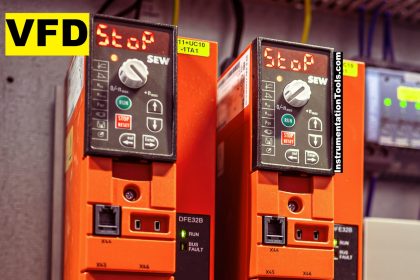
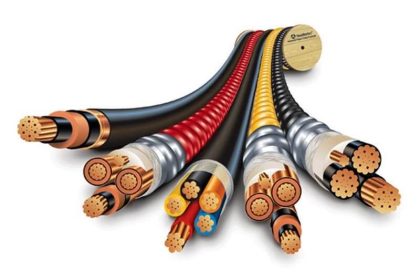


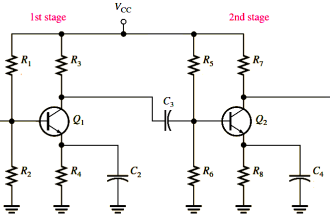
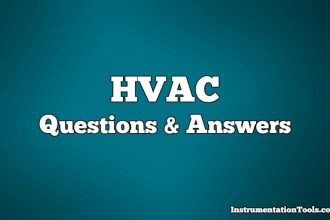
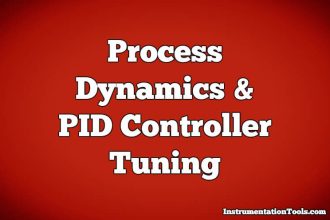


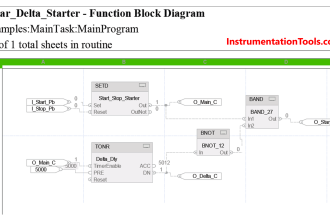
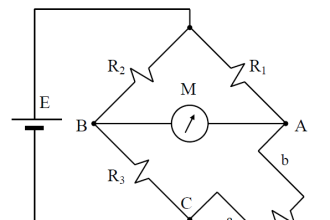
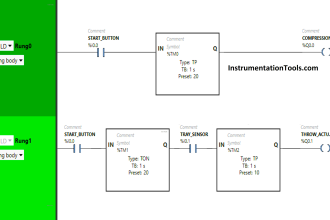

Thank you